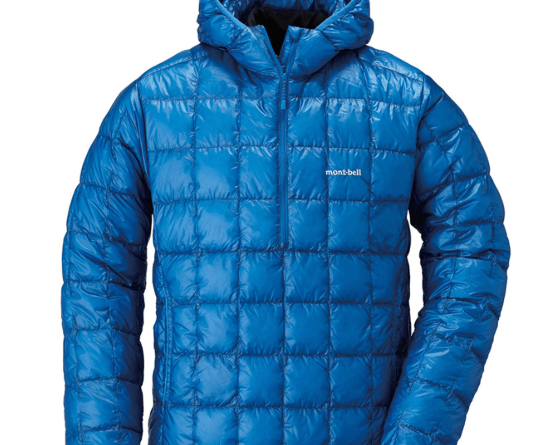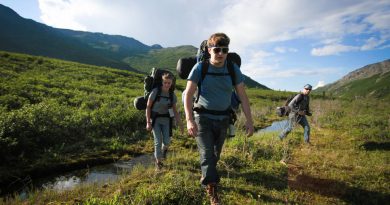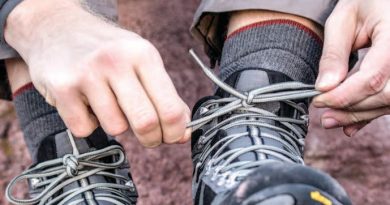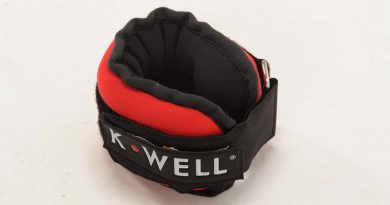The Ultimate Continental Divide Trail Packing List
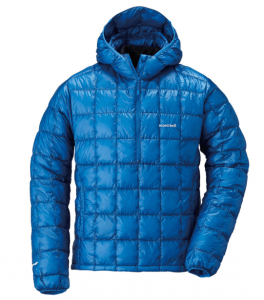 Gear up for the United States’ toughest long path with these expert picks.
Gear up for the United States’ toughest long path with these expert picks.
On a path as long, high, and remote as the Continental Divide Trail, there is little room for gear errors. For four to six months of walking and hunting, CDT thru-hikers have a laundry list of concerns that outpace those of many other long trails: grizzly bears, lightning storms, avalanche danger, unmarked or non-existent trails, long food and water carries, weeks at altitude, and raging snowmelt-filled river fords. That is one reason that while first-time thru-hikers occasionally make it, most wait to tackle the CDT until they have more experience.
Most hikers find the CDT exhausting on a day-to-day basis. When tired, hungry, or dehydrated, hikers often don’t have the patience to put up with gear that may be rubbing oddly or isn’t functioning properly. The solution: get it right the first time.
Compared to the Pacific Crest or Appalachian Trails, many CDT hikers choose slightly heavier-duty gear: their picks have to be strong enough to handle the New Mexico desert and trudge through snow at 14,000 feet in Colorado. Still, hikers try to choose lighter packs to minimize the impact of all that vertical on their back, knees, and joints. Food and water carries on the CDT can be heavy, too, so light gear choices help reduce overall pack weight
Should you need to replace gear, know that brick-and-mortar gear stores are few and far between on the CDT, especially in the crucial first and last 500 miles. Before setting out, CDT hikers should develop a plan to replace gear like shoes along the way, preferably with the help of an at-home support person who can coordinate shipments.
Your gear choices may change depending on whether you attempt to hike the whole CDT in one push, flip flop, or break it up in sections over multiple years. Why? Much of the trail is at 12,000 feet and depending on which week of the summer you travel through that area, you may hit deep snow, rain, bugs, warm temps, or lightning storms.
More than on any other long trail, it’s imperative that you know how to use your gear before you set out. Your best bet is to test it out on a different, easier thru-hike; learn to set up your tent or work your stove without much brain power, and you’ll have a much easier time.
There’s no one best CDT gear system, but these lightweight, simple picks are a good place to start.
Big Three
Backpack

This is the piece of equipment that you’ll be using the most, so spend time picking the right one. A good pack should fit your body, ride well when it’s loaded, and rub or chafe while you walk. As for the AT, I like the Gossamer Gear Gorilla and its bigger cousin, the Mariposa. They only weigh two pounds but are made of abrasion-resistant 70-denier ripstop or 100-denier high strength nylon that can handle a load. (You’ll need that ability, too, as you’ll be toting food across the Wind River Range in Wyoming and snowshoes through Colorado’s San Juans.) Tip: Use a pack liner like a trash compactor bag to waterproof your gear.
Shelter

The CDT doesn’t always have tree cover, so your shelter should be strong enough to stay up during a windy, exposed night on a high ridge. For southbound hikers, mosquitoes swarm in the Anaconda Pintler range of Montana; no matter which way you choose to tackle the CDT, you’ll probably spend a night or more in the snow. The two-person Tarp Tent Double Rainbow is a time-tested shelter that provides the coverage and bug protection of a tent, but the low weight of a tarp. It uses trekking poles to become free-standing and is a good balance of weight, price, and durability.
Sleeping Bag or Quilt

Temperatures on the CDT can vary wildly as hikers move their way through seasons and ecosystems. Still, most thru-hikers tell me the same thing: the trail was colder than they expected. The CDT spends hundreds of miles above 10,000 feet, and even New Mexico, often thought of as the trail’s warmest section, can experience below-freezing temperatures in the spring and fall. Many CDT hikers find a 20-degree sleeping bag or quilt to meet their needs, but you’ll likely want to sub it out for something warmer or bring a liner for the colder stretches. I like the Katabatic Palisade, which is warm, compact, and lightweight, and worked even in early June in the snowy San Juans. For those looking for a traditional mummy style bag, I thru-hiked the CDT with the Western Mountaineering Ultralite, which has full coverage and a hood but weighs less than 2 pounds. Good sleeping bags can be expensive, but with care, they can last 10 years or more.
Sleeping Pad

A good sleeping pad isn’t just a comfy bed. It will keep you warm by insulating you from the ground, too. To save weight, I like to use a ¾ or kids’ length pad. At 10 oz and only $35, the short version of the Thermarest Z-lite Sol is an affordable foam pad that is a favorite of many thru-hikers, especially for traveling through cactus country in New Mexico. By the time CDT hikers reach chilly Colorado, some hikers switch out to the super insulated NeoAir Xtherm.
Clothing
Light Puffy Jacket or Vest

A puffy jacket is an essential piece of clothing for every CDT hiker: while the trail is exposed to the sun during the day, nights can be cold. I like the 6.2 ounce Montbell Ex Light Down Anorak, which balances an extremely light weight with warmth and price. With a full hood and a kangaroo pocket to keep hands warm, this jacket is something hikers will wear almost every day.
Raingear

Afternoon thunderstorms can happen daily on the Continental Divide, at least during certain months and some states. Hikers often like to double up by bringing both a rain jacket and an umbrella. I like the Continental Divide Trail Coalition logoed umbrella; its mylar construction to keep out the sun and the proceeds go back to support the trail. At 6.3 oz, it’s a lightweight compact option that folds nicely into the side pockets of a backpack. For hikers on a budget, it is hard to beat the lightweight Frogg Toggs Dri Ducks Ultralite Rain Gear. A hooded rain jacket and pants cost only $25 and are surprisingly breathable and lightweight. Just be prepared to replace them when the trip is done.
Undergarments
Carry an extra pair. Most hikers enjoy having full-length long sleeve baselayers in colder conditions. Consider bringing an extra pair for sleeping.
Shoes

On a 2000+ mile hike, you’re sure to get a few blisters no matter how good your shoes are. Almost all CDT hikers out for the long haul choose mesh, low-top trail runners. Even in the desert, toes moist from foot sweat can lead to the kind of blisters or chafing that take people off trail for good. After fording raging creeks, mesh trail runners hold water less readily than boots. Each pound on the foot is equal to at least five on the back, so a lightweight shoe can lead to less pounding. Still, choose shoes with enough support and cushion to deal with the weight of your pack—especially for the longer food and water carries. Although the CDT is a lot to ask of a shoe, for sections with longer stretches of dirt or pavement road walking, I like the cushiony Altra Timpanagos or Olympus. For softer terrained parts of the trail, the Altra Lone Peaks are a CDT hiker staple. If you expect to be wearing snowshoes or traveling for more than a hundred miles on snow, you may be happier switching to a hightop waterproof trail runner or a boot. Expect to replace your thru-hiking shoes every 400 miles, especially since many hikers find their feet “grow” up to two-sizes over 2,000 miles.
Socks
Since gear stores can be few and far between on the CDT, it’s important to have socks that will last. Quality hiking socks will hold up for hundreds of miles, even when wet or encrusted in sand. I find the Darn Tough light hikers to fit so well I can barely feel them, which cuts down on the kind of rubbing that can lead to hot spots or chafing from moist footwear. Merino wool reduces stink, too. Carry enough so that you won’t have to wear yesterday’s wet socks.
First Aid and Emergency Bag

Because the CDT can be so remote, hikers and their loved ones may want to consider investing in a Garmin Inreach, a two-way personal locator beacon. Should snow, fords, or injury leave you stranded, the Garmin can be used to trigger a distress signal and get emergency help. Some subscription plans allow hikers to essentially “text” their loved ones through the Garmin as well, a convenient way to stay in touch on remote sections of the CDT. Downside: the inReach can be expensive, at $450 plus a monthly subscription fee.
Navigation App, Databook, Town Guide, Compass, Watch, Maps
Unlike other trails, the CDT is not always marked, even at intersections. There are still some CDT stretches that have no trail at all and require bushwhacking or cross-country navigation skills. Hikers should carry paper maps and a compass and come equipped with the knowledge to use them. Most CDT hikers also carry an electronic or app version of trail maps on their phone or GPS device. But don’t count on electronics as your primary form of navigation and consider carrying a back-up battery: rain, snow, and the vagaries of random chance can take electronics out of commission at the worst times.
Light

If you’ll be doing serious night hiking, carry a waterproof headlamp. Otherwise, I recommend the 0.25 ounce Photon Freedom Micro LED keychain, which is bright enough for nighttime bathroom breaks. It comes with attachments to use as a hat clip and necklace, too.
Potty Kit

Thru-hiking potty trowels like the Deuce of Spaces weigh 0.5 oz and make digging a cathole the easiest part of the day. Be sure to pack out used toilet paper: The CDT is a newly popular trail. Don’t let your poop be the one that ruins it for future hikers.
Water Filter

If you have visions of untouched mountain streams dancing in your head, we have a rude awakening for you: Continental Divide Trail hikers often end up drinking out of cow troughs. Sometimes, there are cows in the trough. Sometimes, those cows have done the unthinkable in the trough. And sometimes, that’s the only water for miles in any direction.
With that in mind, a good water filter is a must. I like the Sawyer Squeeze, which easily screws onto a Smartwater bottle or can be used as an inline filter with a hose and bladder hydration system. Its light weight and long life (a million gallons!) make it a near-ubiquitous choice among thru-hikers. It comes with a syringe to help clean out gunk from inside the filter. Most hikers run the worst water through a bandanna first before treating, while other hikers carry chemical treatment to use as a backup.
Stove and Cook Kit
Fire danger is high in the west during summer months, and some hikers choose to go stoveless. If you like a hot meal or warm coffee in the morning, go with a lightweight canister stove.
Bear Protection
The CDT travels through grizzly bear country for 1,000 miles. Some National Parks will explicitly require you to stay in established campgrounds with bear poles, while others may require you to use a canister. When neither is required, I like the Ursack Major XL bear bag, which holds 15 liters of food and weighs 8.7 oz. Paired with an OPSak odorproof food bag, it is lighter and less bulky than a bear can and saves CDT hikers the pain of having to hang food through grizzly country.
Replacing Shoes
Most hikers will need to replace trail running shoes every 400 miles. For first-time thru-hikers, I advise starting the CDT with a pair of shoes that you’ve worn in and trust, but haven’t used too much. If that pair worked out, when you’re 300 miles into your trip, use the internet to order yourself a new pair and have it mailed to a post office near the 400-mile mark of your trek. (Note that post offices can’t accept packages from UPS or other delivery services.) If your first pair didn’t work out, find a gear store near the trail and try on other pairs, or size up. Be prepared to have to switch shoes out frequently until you find your dream shoe.
The article was originally seen at https://www.backpacker.com/skills/the-ultimate-continental-divide-trail-packing-list
Originally posted 2018-06-01 11:24:43.

